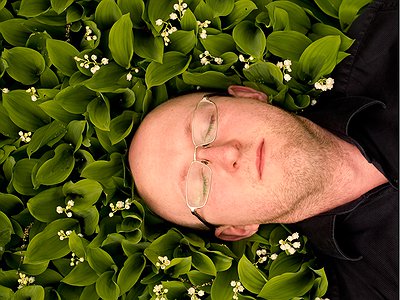What are the musical reason why we love birdsong so much?
I think there is a deep connexion between humans and the natural world, and particularly birds. The bird is an ever-present part of our human experience. It is also universally identifiable with freedom, with simplicity, with beauty. Birds have fascinated man from prehistory and they have developed symbolic and religious significance through the ages, from the Roman eagle of the Caesars to the dove of the Bible, from the fantastic phoenix to the griffin and the god-peacock of India. In its interaction with man, it is found in every cultural area, in music of course, in visual art, in poetry, even in heraldry.
As to the music of birdsong and why we love it, I should say that beautiful singing is enjoyed by humans and birdsong is understood as the most natural manifestation of song. We are interested by its familiarity and its unpredictability, its contrasts and its consistency. It is perhaps for this reason that in my exploration of works inspired by birds and birdsong I have found no detriment to good musical sense, in fact quite the opposite. There is no emotion, no musical satisfaction, no artistic integrity, lacking in a selection of works based on this subject.
In your "Birds and Birdsong" programmes, you examine the topic of birdsong in music from a historical perspective. It is astounding how far back that journey goes ...
Yes, these programmes span a very large period, and it is amazing to think that birdsong has been a constant inspiration to composers for hundreds of years! What is remarkable is the variety of ways in which birdsong can be woven through the music. So, we have in Daquin an almost ceaseless thread of the cuckoo's song, forming a backbone to the tonal and harmonic content; in Rameau and Ravel we have what might be described as "generic" song infused into a complex musical creation that explores natural fluctuations of mood. Birdsong, and the subject of the bird, is often a "way in", therefore, to a deeper understanding of reality.
And then, there's Messiaen, of course ...
Messiaen's birdsong music obviously occupies a special place in the repertoire. He elevated this area to an art-form, perhaps even a science. Taking into consideration his early "La Colombe" ("Dove"; from the Préludes of 1929) and the monumental "Catalogue d'oiseaux" (1956–8), I would single out the stunning La Fauvette des jardins ("The Garden Warbler"; 1970) as an unparalleled masterpiece.
There's a quotation from Messiaen that reads: "I doubt that one can find in any human music, however inspired, melodies and rhythms that have the sovereign freedom of bird song."
While Messiaen found birds to be "sovereign" in their creative capacity, he also said they are "the closest to us, and the easiest to reproduce". I should assert that the only man-made music ever, perhaps, to come close to birdsong is Gregorian chant. This music, the music proper to the liturgy of the Roman Catholic Church, manifests the same flexibility of both melody and rhythm. There is even evidence to suggest that the Gregorian melodies we have written down were the basis, in fact, of improvisation – which of course further reminds us of the sounds of the natural world.
Again, we note that in music inspired by birds we find an opportunity to explore the natural sounds around us, which is another reason why there is such vitality and depth in all this music.
From your point of view, which of the two aspects – the ornithological or the musical – is more prevalent in Messiaen's style?
I referred earlier to Messiaen's "science" in this area. It is true that some of the birds, most of them in fact, are astonishingly similar to their inspiration. But if it possible to divide our subject, I have to say that I find the musical, not the replicative, to be the predominant faculty in his works. In simpler terms, birdsong seems put to the service of the music. Although there are episodes of "freedom" and "improvisation" - some of them fiendishly difficult! - it is the way the whole is arranged in every case that enables the works to become pieces of music in the way we would understand it in performance. Messiaen can be very free in his musical forms, but there is balance and proportion in every compositional choice.
Some works, such as "Le Traquet stapazin" ("The Black-eared wheatear"), "Le Courlis cendré ("The Curlew") (both from Catalogue d'oiseaux) and La Fauvette des jardins, explore the notion of time: here, although our sense of time is rooted by apparently extra-musical subjects – like the movement of the sun – the musical material is used in logical and "accepted" ways in order to articulate the action.
I find that, in spite of – perhaps because of – being inspired by birds and birdsong, these works are some of the most traditional as any in the piano repertoire.



